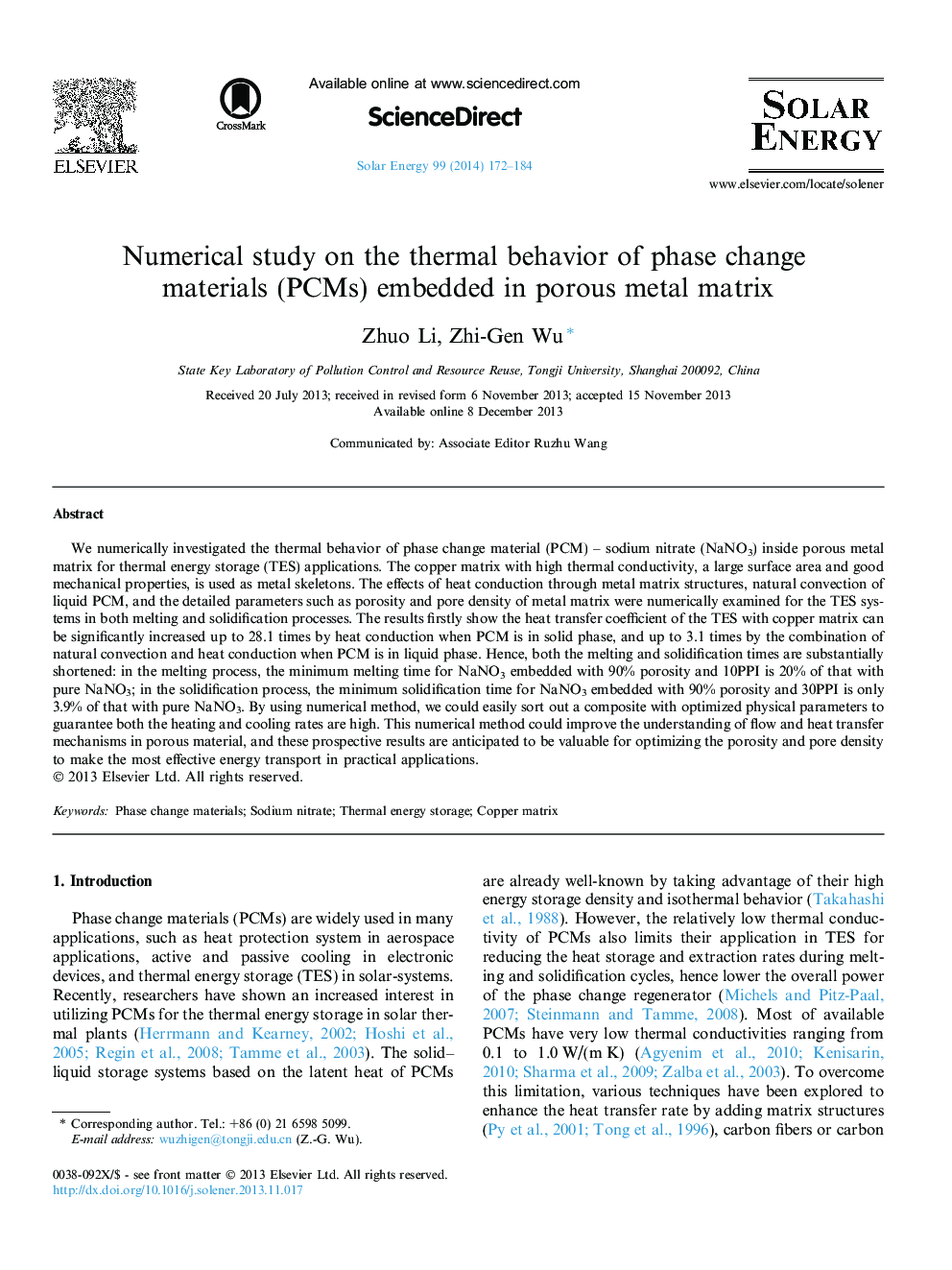| Article ID | Journal | Published Year | Pages | File Type |
|---|---|---|---|---|
| 1550226 | Solar Energy | 2014 | 13 Pages |
•We modeled nine thermal systems with a phase change material in copper matrix.•We quantified the independent effect of heat conduction and natural convection.•Heat is mainly transferred by metal struts rather than natural convection.•The porosity is more important than the pore density in enhancing heat transfer.•We optimized physical parameters to sort out a most efficient composite.
We numerically investigated the thermal behavior of phase change material (PCM) – sodium nitrate (NaNO3) inside porous metal matrix for thermal energy storage (TES) applications. The copper matrix with high thermal conductivity, a large surface area and good mechanical properties, is used as metal skeletons. The effects of heat conduction through metal matrix structures, natural convection of liquid PCM, and the detailed parameters such as porosity and pore density of metal matrix were numerically examined for the TES systems in both melting and solidification processes. The results firstly show the heat transfer coefficient of the TES with copper matrix can be significantly increased up to 28.1 times by heat conduction when PCM is in solid phase, and up to 3.1 times by the combination of natural convection and heat conduction when PCM is in liquid phase. Hence, both the melting and solidification times are substantially shortened: in the melting process, the minimum melting time for NaNO3 embedded with 90% porosity and 10PPI is 20% of that with pure NaNO3; in the solidification process, the minimum solidification time for NaNO3 embedded with 90% porosity and 30PPI is only 3.9% of that with pure NaNO3. By using numerical method, we could easily sort out a composite with optimized physical parameters to guarantee both the heating and cooling rates are high. This numerical method could improve the understanding of flow and heat transfer mechanisms in porous material, and these prospective results are anticipated to be valuable for optimizing the porosity and pore density to make the most effective energy transport in practical applications.
